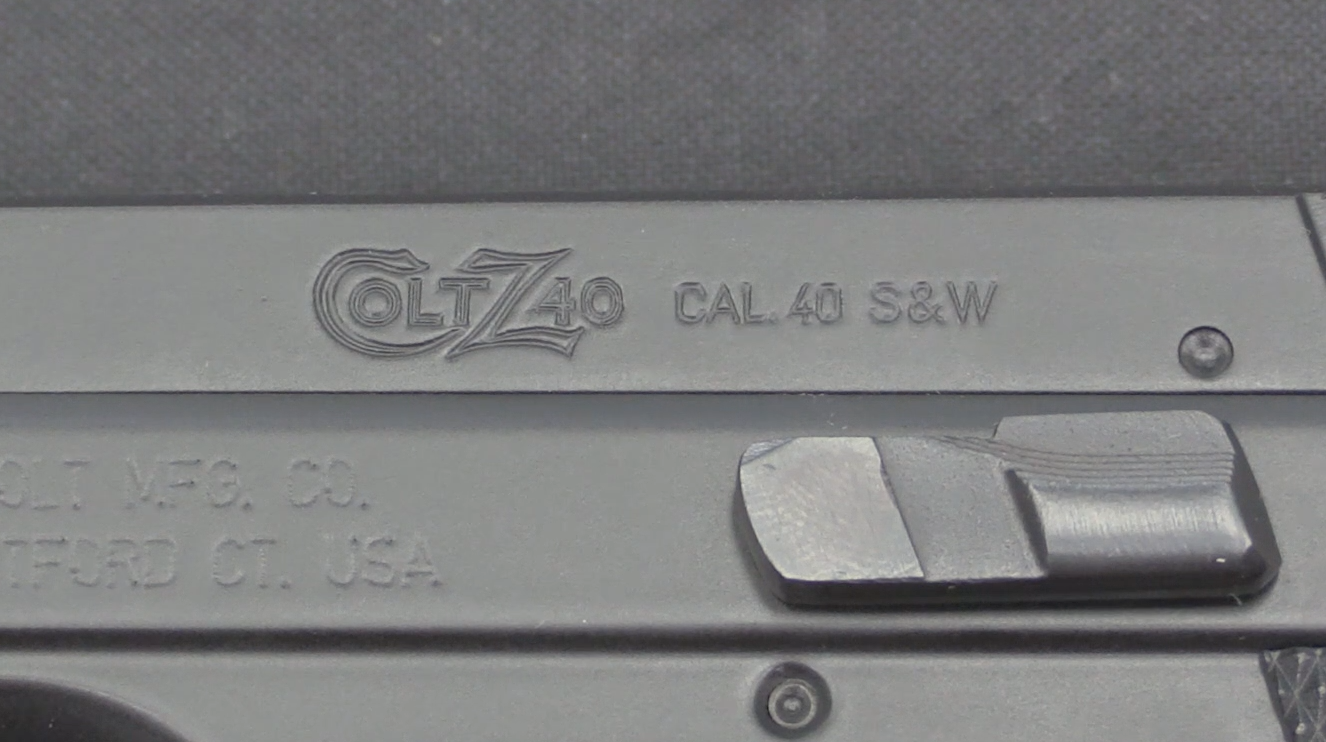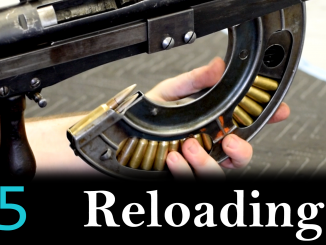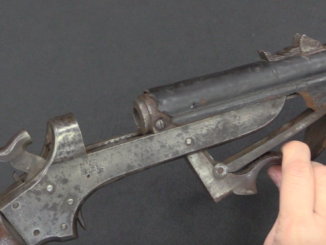This suppressed carbine is lot #1079 in the upcoming April 2019 Morphy’s auction.
Tom Denall’s “Silent Destroyer” (originally built on surplus Sanish “Destroyer” carbines) is a Ruger 77/44 bolt action rifle with a large integral suppressor. Chambered for the .44 Magnum cartridge, it allows the use of a heavy bullet to maximize ballistic potential while remaining subsonic, prevents mechanical action noise by being a bolt action system, and feeds from 3-round detachable box magazines. This particular example has been fitted with a light and small Burris Fastfire red dot optic, and makes for a handy and extremely quiet carbine. Like the DeLisle, but without all of that system’s flaws!




Integrally suppressed bolt-action rifle firing Magnum revolver cartridges, but with super-heavy bullets. This descriptions also fits Swiss G150
https://modernfirearms.net/en/sniper-rifles/standart-caliber-rifles/switzerland-standart-caliber-rifles/g-150-2/
Although in this cases .41 Magnum cases were used rather than .44 Magnum.
This, but made to take Desert Eagle magazines. That’s what I want.
Feral swine, meet your maker! If I were living on a ranch in Florida, I would immediately be short 2k and in hog heaven! That is, assuming it works as advertised…
Yes, hunting/pest-control. Some of the ORIGINAL PURPOSES of the firearms suppressor. I’m glad I decided to read up more on why the suppressor was invented, and most of it was for noise-control for a utilitarian/sporting event. Nothing to do with assassinating stuck-up stuffed-shirt politicians with monocles.
As one book I have says, the original idea was to be able to shoot rats in the hen-house without adversely affecting egg production.
My father was a police officer in the 1930s and 40s, and one of the jobs on the department that nobody wanted was pest control at the city dump. (Today, it’s still in the same place, but they call it a landfill.)
He used a .22 Winchester pump-action rifle with a Maxim pattern suppressor for the job, because the previous officer who was on the detail used his .38 service revolver and scared the living daylights out of people along the nearest street about 300 yards away.
The difference was the previous officer was assigned the detail as punishment for having screwed up rather spectacularly. My father and his partner volunteered for the detail because it gave them a chance for target practice with the department paying for the ammunition.
cheers
eon
“Nothing to do with assassinating stuck-up stuffed-shirt politicians with monocles.”
Indeed, Maxim patent from 1908 shows his invention fitted to lever-action rifle:
https://patents.google.com/patent/US916885
which by that time was more often for hunting/sporting purposes that military.
It was dogs an cats going “missing” in the great depression, the suppressor was soon seen as a poachers tool.
The Ruger 77/44 magazine holds 4, not 3 rounds, and the magazine is not difficult to remove if you use the right drill.
I agree with Jim.
The 77/44 is what replaced the ‘Deerfield’.
Ruger just used the same magazine.
Mossberg should make a suppressed MVP in 300 Blackout. Would be better than this.
De Lisle “flaws”? Evidence? Take the point that only 17 pre-prods and around 129 production models were made, and that the conversion was mechanically tricky. But where is the evidence that it had significant flaws?
Concerning the ejection flaws of the De Lisle the first is that to eject successfully the centre of gavity of the case must be over the side of the action before the extractor lets go of the case rim. The gun works after a fashion because the jumping up of the next round when the bolt clears the magazine throws the fired case out of the action. The correct solution would be to use a sprung plunger ejector ( as M16). This is not possible with the No 1 bolt head.
Maybe the designers wanted the case left in the action so that it could be taken out manually without leaving it on the ground as evidence
Next for Fallout tactical remake: The Jungle Carbine
I own one of these rifles made by SRT Arms. It’s the last whitetail deer rifle I’ll ever own hunting here on the east coast where most shots on game are taken at under 150 yards. I reload my rounds at about 1040 fps and have shot video of the deer dropping while others around it just stood there and looked on. If there are any issues, it’s the fit of the 4 round detachable box mag, and the fact that the integral suppressor can’t be disassembled for cleaning. That aside, it’s a very accurate rifle for taking game where I hunt, with head shots being the norm. The deer just drop, with no primary meat areas being traumatized. Cost with tax stamp in 2015: under $2,000.